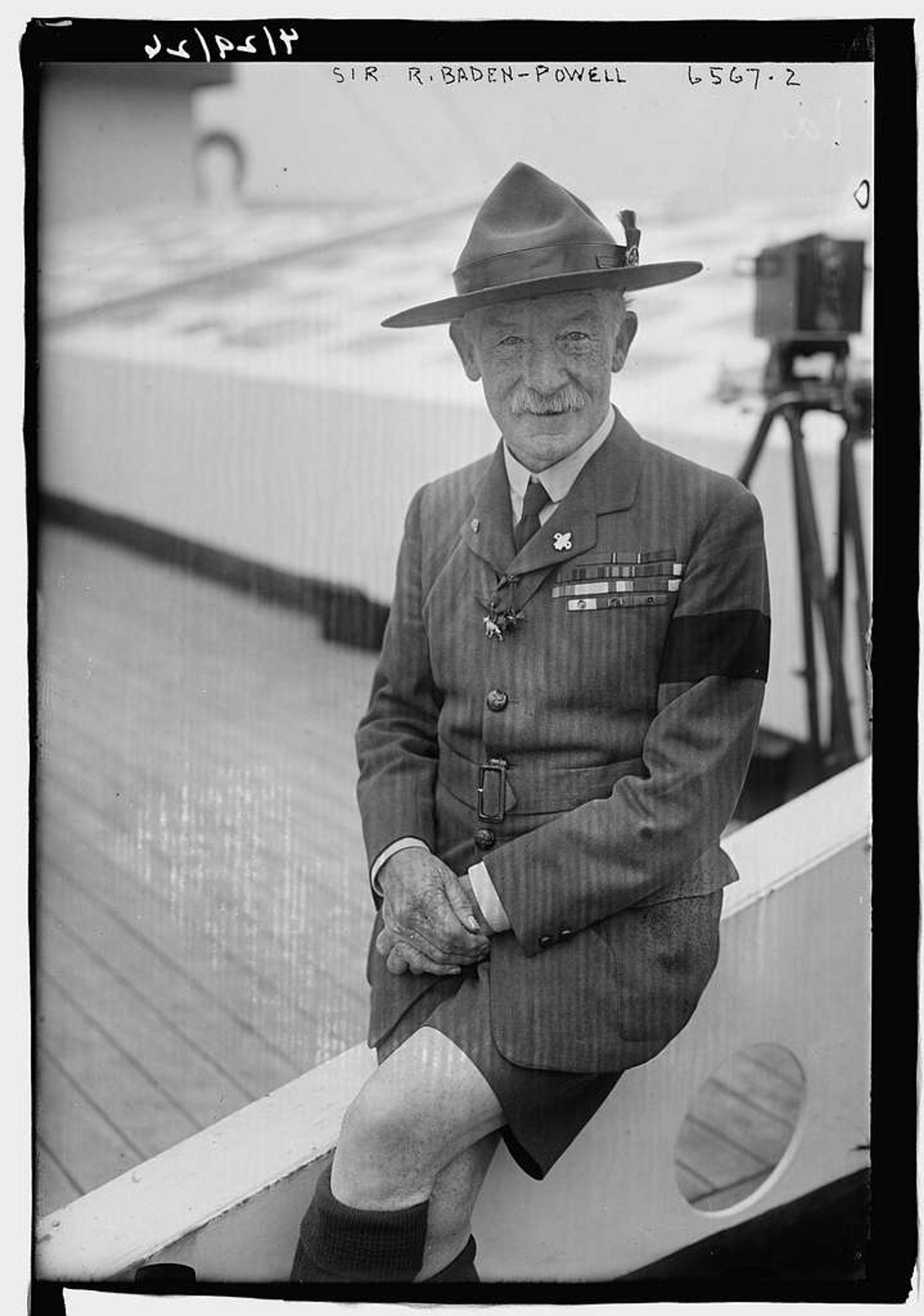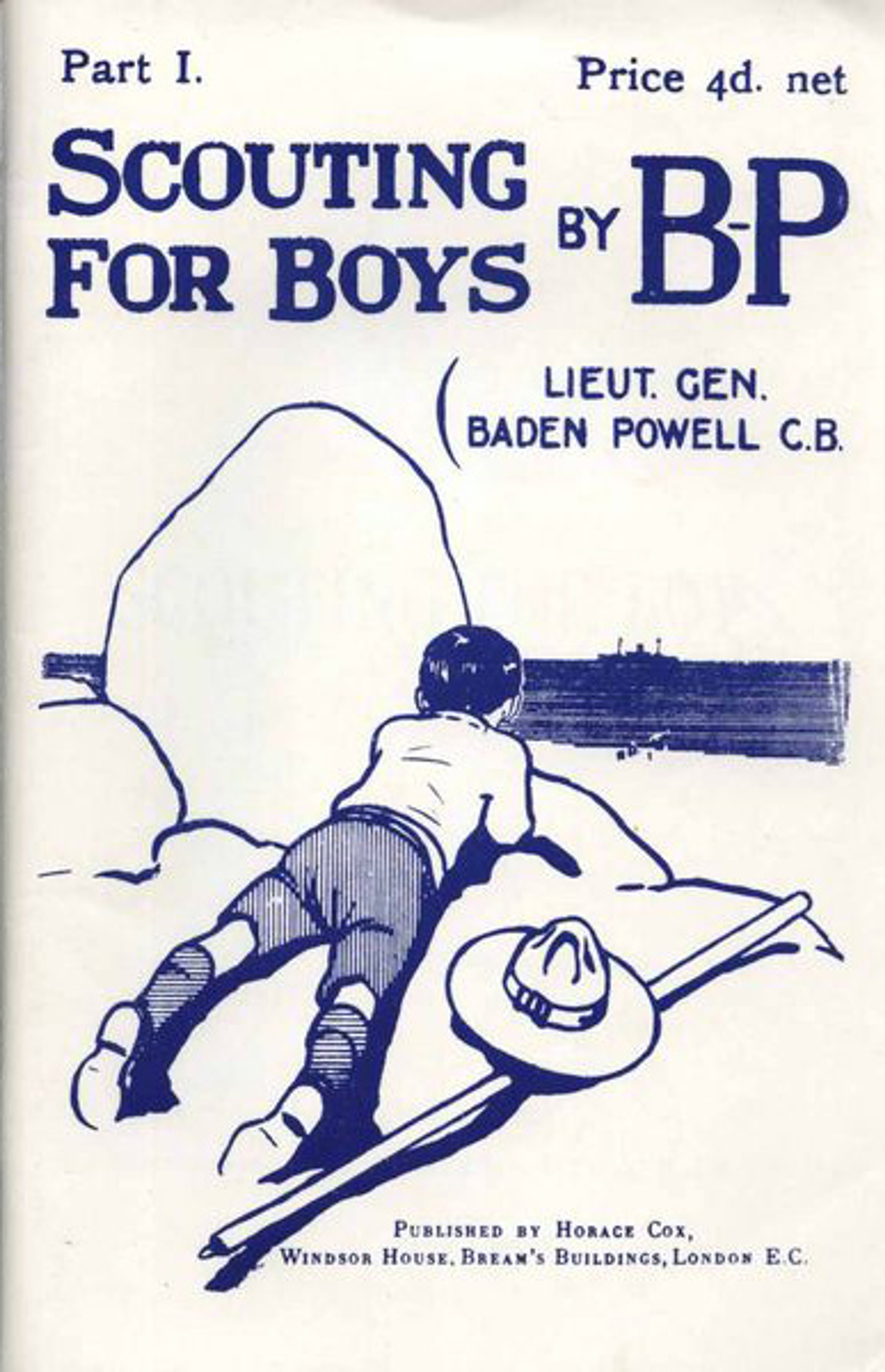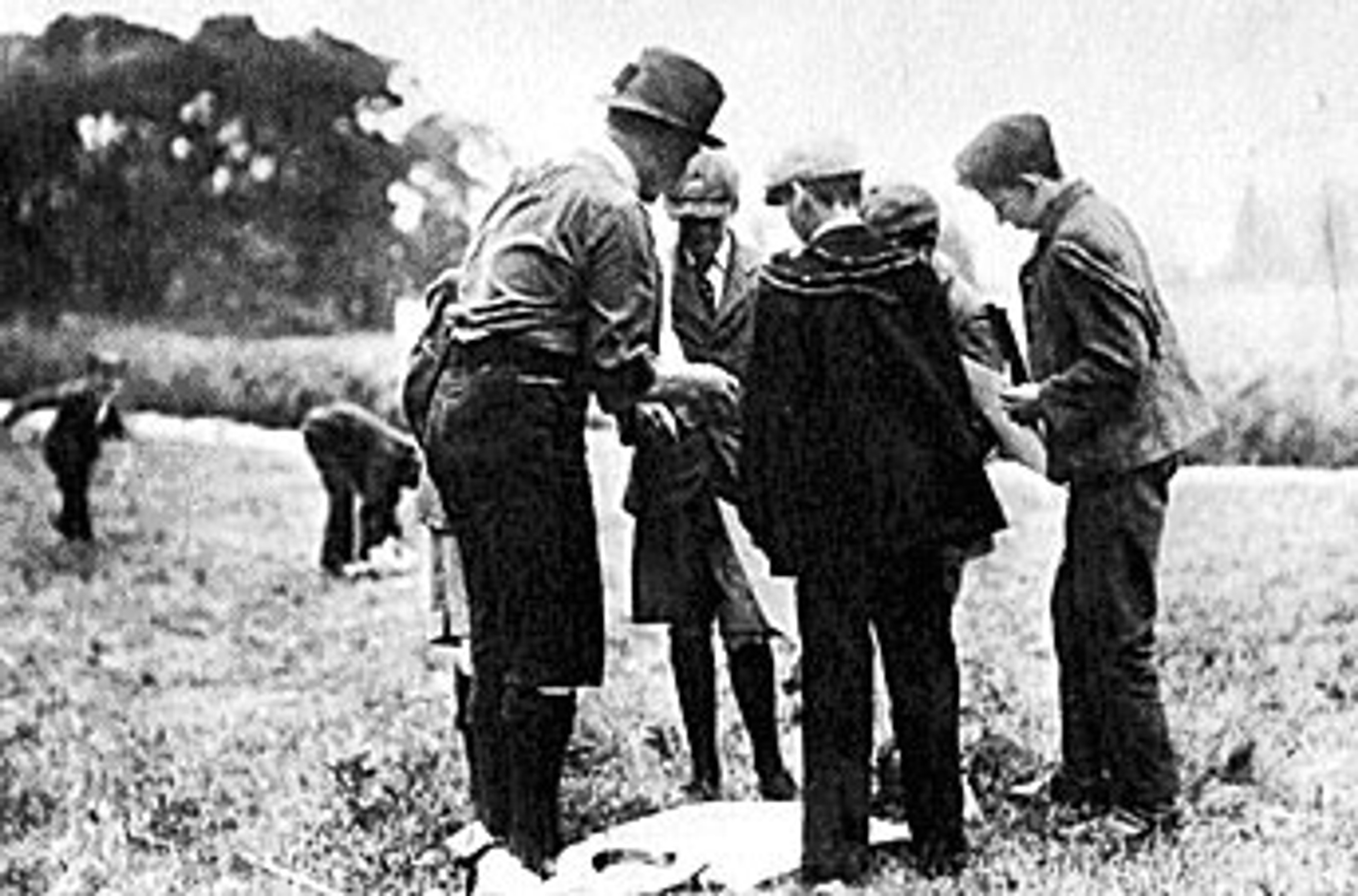Dwayne Fields and Caroline Pantling
What's Your Map? Live at the British Library
What's Your Map? live at the British Library with Dwayne Fields and Caroline Pantling
This special live episode was recorded at the British Library on Saturday 25 October. You can enjoy the recording below, or watch on our YouTube channel.
In this special live episode, Jerry speaks to explorer and Chief Scout Dwayne Fields, who is accompanied by Head of the Scout Heritage Collection, Caroline Pantling.
They shine a spotlight on the innovative, hand-drawn maps of the Scout movement founder Lieutenant-General Robert Baden-Powell (1857-1941), and talk about the importance of imagination and adventure.
The maps they discuss in the episode are illustrations from Baden-Powell's 1915 book "My Adventures as a Spy". The book recounts Baden-Powell's own experiences in the military and his career in espionage, and feature his charming hand-drawn maps hidden in natural history sketches.
... The exceedingly stupid Englishmen who wandered about foreign countries sketching cathedrals, or catching butterflies, or fishing for trout, were merely laughed at as harmless lunatics. These have even invited officials to look at their sketch-books, which, had they had any suspicion or any eyes in their heads, would have revealed plans and armaments of their own fortresses interpolated among the veins of the botanist's drawings of leaves or on the butterflies' wings of the entomologist.
Some examples of secret sketches of fortresses which have been used with success are shown on the following [pages]:

Public domain via Project Gutenberg. Vectorised and colour inverted October 2025.
"This sketch of a butterfly contains the outline of a fortress, and marks both the position and power of the guns. The marks on the wings between the lines mean nothing, but those on the lines show the nature and size of the guns, according to the keys below."

Key to the icons, from top:
Fortress guns
Field guns
Machine guns
The position of each gun is at the place inside the outline of the fort on the butterfly where the line marked with the spot ends. The head of the butterfly points towards the north...

Public domain via Project Gutenberg. Vectorised and colour inverted October 2025.
"A smart piece of spy-work. Veins on an ivy leaf show the outline of the fort as seen looking west. (Point of the leaf indicates north)."

Key to the icons, from top:
Shows where big guns are mounted if a vein points to them
Shows 'dead ground', where there is shelter from [gun]fire
Shows machine guns

Photograph of Baden-Powell from the George Grantham Bain Collection [LC-B2- 6567-2] Prints and Photographs Division, Library of Congress. Public Domain.
Baden-Powell was a decorated British Army officer and the founder of the Scouting Movement.
He served as a young army officer in India in 1876, specialising in scouting, map-making and reconnaissance. He was later stationed in South Africa during the Second Boer War (1899–1902) and worked as an intelligence officer in Malta and the Mediterranean gathering information in fortresses.
You can find out more about Baden-Powell here.
In 1899, he wrote a military textbook titled ‘Aids to Scouting’. This guide was used by youth leaders and teachers to train boys in woodcraft and observation. Learning of its influence in England upon his return from Africa in 1903, Baden-Powell devised the Boy Scouts (formally established in 1908) - and also the Girl Guides (1910) with his sister, Agnes.
The Boy Scounts was initially only aimed at boys aged 11-15. It aimed to foster responsibility and positive active citizenship through the teaching of outdoor skills and activities, including camping, cooking, and survival techniques.

Public Domain via Wikimedia Commons.
In August 1907, Baden-Powell ran an experimental summer camp on Brownsea Island, off Poole in Dorset. The aim was to test out his ideas for a new publication, ‘Scouting for Boys’, a practical and fun manual full of ideas to learn useful skills and nurture positive behaviour. It also featured illustrations by Baden-Powell himself.
He gathered eight boys from local Boys' Brigade companies in Bournemouth and Poole, and about twelve public school boys. He wanted to create an inclusive mix of attendees from different backgrounds to develop teamwork, peer leadership and to give them the opportunity to be together and learn from each other.

Baden-Powell and Scouts on Brownsea Island in August 1907. Public Domain via Wikimedia Commons.
Following the success of the experiment on Brownsea, Baden-Powell re-wrote ‘Scouting for Boys’ for a younger audience. It was issued in 1908 as a fortnightly series in 6 parts:
Part I: Scoutcraft
Part II: Tracking and Woodcraft
Part III: Camp Life and Campaigning
Part IV: Endurance and Chivalry
Part V: Saving Life and Patriotism
Part VI: Notes for instructors, Scouting games, practices, and displays
This small training pamphlet was enormously successful and inspired Scout ‘troops’ or ‘patrols’ to be established all over the UK. The Scounts has since grown into an international Movement with over 30 million members.
According to the Scouting Association website, there are only six countries in the world today that do not have Scouts.
As UK’s Chief Scout, Dwayne wants to get people outside, and create their own adventures. He suggests that teaching young people to read maps is an excellent method for achieving this. In fact, this focus on mapping is part of how the Scouting movement began, as Baden-Powell's career started in scouting and reconnaissance.
Map reading is an essential skill that not only aids journey preparation but also encourages collaboration, knowledge exchange, and the sharing of experiences. This is vital for empowering young people, ensuring their safety, and providing them with a clear understanding of what lies ahead.
"Don't just give them a map, give them a mystery" - Dwayne channelling the ethos of Baden-Powell.

Scouts using a map and compass. Public Domain via Pexels.
About Dwayne Fields

©Michael Wharley
Dwayne is a pioneering explorer, presenter and the UK's Chief Scout.
He is an advocate for encouraging people to get outdoors and explore the world around them – with a particular focus on encouraging young people growing up in inner cities to get out and experience nature and a life with which they have not previously been engaged.
Born in Jamaica, Dwayne grew up in the UK from the age of six. He has been the victim of both knife and gun crime and as a result of his experiences of the effects of gangs and crime, he decided to change his life. In 2010, Dwayne was the first black Briton to walk over 400 miles to reach the Magnetic North Pole.
Dwayne is a Fellow of the Royal Geographical Society. In 2018, he was presented with its ‘Geographical Award’ for empowering young people to explore the world.
At the end of 2019 Dwayne and his expedition partner Phoebe Smith, travelled the length of mainland Britain as part of their mission to engage young people to realise there are epic adventures on their own doorstep, to highlight environmental issues close to home, and to turn the spotlight on wildlife conservation. Their inaugural trip taking a group of under-privileged young people to Antarctica was completed in 2022 through their #WeTwo Foundation, and was followed by a trip to the Galapagos Islands in late 2024.
A recent television series saw Dwayne join forces with Ben Fogle to undertaken an extraordinary journey: stepping back in time to wear the clothes, eat the food, and use the same kit as their Edwardian heroes, Scott, Shackleton, and Amundsen. Their adventure was broadcast in the Channel 5 series “Endurance: Race to the Pole”.
Dwayne is also one of the explorers guiding two-time Academy Award® nominee Will Smith on “Welcome to Earth”, a Disney+ original series from National Geographic. This once-in-a-lifetime adventure around the world explores Earth’s greatest wonders and reveals its most hidden secrets.
Find out more about Dwayne and his inspiring projects and adventures here.
About Caroline Pantling

Courtesy of Caroline Pantling (EFHT)
Joining Dwayne to discuss the history of the UK Scouting Association, and their Heritage Collection is Caroline Pantling, Head of Heritage Services.
Caroline leads a brilliant team who look after the collection which tells the story of the foundation and development of the Scout Movement in the UK. You can find out more about the Scout Heritage Collection here.
She studied Educational Studies BA Hons at the University of York followed by an MA in Heritage Education and Interpretation at Newcastle University. Her career has seen her work for numerous heritage organisations including the National Trust, the National Army Museum and Norfolk, Sheffield and West Berkshire Museums.
If you have been inspired by this episode to find out about volunteering for the Scouting movement, visit scouts.org.uk/volunteer

The Sunderland Collection is truly honoured to have been invited by the British Library to collaborate on this exciting live event, as part of the programming to accompany the Library's exhibition Secret Maps.
Why not continue your exploration of the wonderful world of maps by subscribing to the podcast? That way you will never miss an episode.
Feel free to let us know - What's YOUR Map?!

